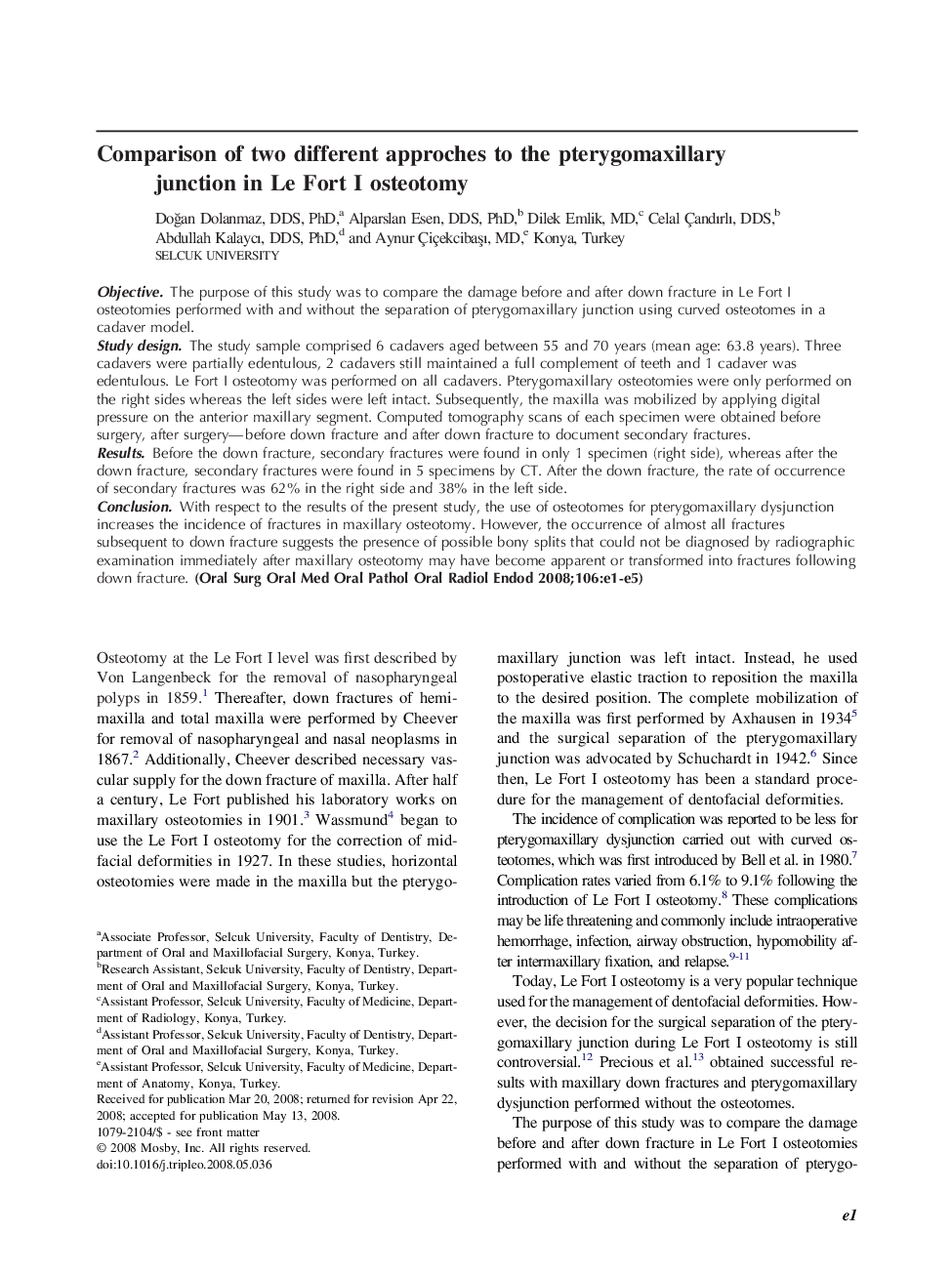| Article ID | Journal | Published Year | Pages | File Type |
|---|---|---|---|---|
| 3168501 | Oral Surgery, Oral Medicine, Oral Pathology, Oral Radiology, and Endodontology | 2008 | 5 Pages |
ObjectiveThe purpose of this study was to compare the damage before and after down fracture in Le Fort I osteotomies performed with and without the separation of pterygomaxillary junction using curved osteotomes in a cadaver model.Study designThe study sample comprised 6 cadavers aged between 55 and 70 years (mean age: 63.8 years). Three cadavers were partially edentulous, 2 cadavers still maintained a full complement of teeth and 1 cadaver was edentulous. Le Fort I osteotomy was performed on all cadavers. Pterygomaxillary osteotomies were only performed on the right sides whereas the left sides were left intact. Subsequently, the maxilla was mobilized by applying digital pressure on the anterior maxillary segment. Computed tomography scans of each specimen were obtained before surgery, after surgery—before down fracture and after down fracture to document secondary fractures.ResultsBefore the down fracture, secondary fractures were found in only 1 specimen (right side), whereas after the down fracture, secondary fractures were found in 5 specimens by CT. After the down fracture, the rate of occurrence of secondary fractures was 62% in the right side and 38% in the left side.ConclusionWith respect to the results of the present study, the use of osteotomes for pterygomaxillary dysjunction increases the incidence of fractures in maxillary osteotomy. However, the occurrence of almost all fractures subsequent to down fracture suggests the presence of possible bony splits that could not be diagnosed by radiographic examination immediately after maxillary osteotomy may have become apparent or transformed into fractures following down fracture.
